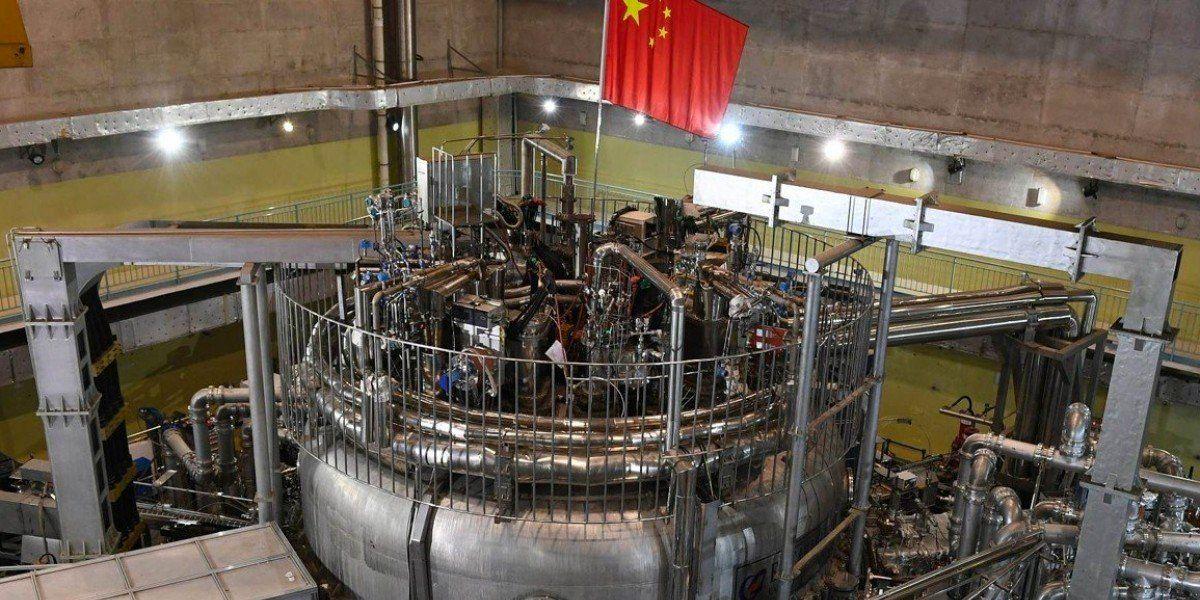
finance.yahoo.com
China's Artificial Sun Just Smashed a Fusion World Record
The formidable reactor reached 120 million degrees Celsius for an astounding 101 seconds.
Science & Tech
China’s “artificial sun” tokamak has sustained a plasma reaction for a whopping 101 seconds at 120 million degrees Celsius, setting new records in the field of nuclear fusion. The breakthrough could pave the way for a carbon-neutral energy future.
EAST (Experimental Advanced Superconducting Tokamak), or HT-7U, is a custom-built fusion reactor that has operated in different phases since 2006. Like many of the world’s tokamak experiments, EAST has reached fusion before. As a refresher, inside the donut-shaped (or, sometimes, more spherical) containment of a tokamak, sun-hot plasma swirls in a circle that’s held in place by supercooled electromagnets.
This magnetic field is the only thing floating between 360-million-degree plasma and a bunch of human-made materials that obviously can’t sustain that temperature. The plasma results from smashing different nuclei together, fusing them rather than splitting them.
This requires a huge energy investment, which critics say means fusion will never really get off the ground. And so far, all tokamaks work for just a scant few seconds at lower temperatures before something goes wrong.
This is why EAST—which just properly “turned on” last December—running for 101 seconds at 120 million Celsius is such a huge deal. It’s a double whammy: a very long runtime at an extraordinarily high temperature. In 2018, the tokamak reached 180 million degrees Fahrenheit, or about 82 million degrees Celsius. But back then, EAST could only sustain the plasma for around 10 seconds.
That’s not hot enough or long enough, but 120 million degrees Celsius and 101 seconds, which EAST achieved in late May, certainly are. So, this is a record for both the required power-generating temperature and the duration for keeping the temperature at a stable level.
Why does the temperature have to be so extraordinarily hot? The sun, after all, operates at “just” 15 million degrees Celsius. But it also has a huge advantage because of its enormous size, getting an assist from gravity that helps to smash its atoms together. Instead of using gravity, Earthbound tokamaks must heat to many millions more degrees in order to make the atoms amenable to the smash.
While the artificial sun’s new record is great, it’s still a very long way from a self-sustaining plasma reaction, or “ignition.” That will involve likely even higher temperatures that are held for a much longer time.
As for other high-profile reactors around the world, the U.K.’s MAST reactor recently made headlines with a new exhaust system that reduces heat 10 times better than its predecessor. In the meantime, the global International Thermonuclear Experimental Reactor (ITER) is on track to build the hugest tokamak ever, with first plasma projected in 2030. Each experimental reactor has goals to help push technology forward to help all the others.
The future of EAST could involve lessons learned by ITER, Korea’s KSTAR reactor (which held the previous fusion record), MAST, and even private tokamak researchers that are chipping away at the major obstacles to fusion energy. All have the same goal: to sustain an extremely hot reaction and keep their equipment safely running for as long as possible.
























































